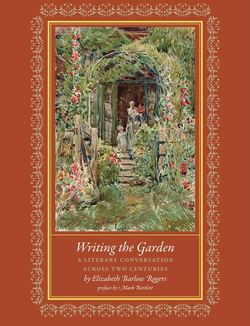Читать книгу Writing the Garden - Elizabeth Barlow Rogers - Страница 17
На сайте Литреса книга снята с продажи.
Elizabeth von Arnim
ОглавлениеElizabeth von Arnim (1866–1941), an English novelist, became famous for her first book, Elizabeth and Her German Garden (1898), which was so immediately popular that it ran to twenty printings in the initial year of its publication. Couched in the form of a diary, it describes the free-spirited author’s efforts to become a gardener in the face of the mores of aristocratic society in provincial Germany and the duties imposed on her as the mistress of her husband’s large Pomeranian estate.
Elizabeth, a nom de plume devoid of a surname (her maiden name was Mary Annette Beauchamp), was forced to disguise her identity at the request of her domineering husband, Count Henning August von Arnim-Schlagenthin, whom she refers to throughout her book as the “Man of Wrath.” Some readers today will object to her high-handed treatment of servants and censorious attitude toward most of her visitors. To her credit, “German Elizabeth,” as she became known to readers, scolds herself for being disagreeable when in pursuit of escape from the strictures of the Man of Wrath and the household responsibilities and social demands that take her away from her beloved garden:
The garden is the place I go to for refuge and shelter, not the house. In the house are duties and annoyances, servants to exhort and admonish, furniture, and meals; but out there blessings crowd around me at every step—it is there that I am sorry for the unkindness in me, for those selfish thoughts that are so much worse than they feel; it is there that all my sins and silliness are forgiven, there that I feel protected and at home, and every flower and weed is a friend and every tree a lover. When I have been vexed I run out to them for comfort, and when I have been angry without just cause, it is there that I find absolution. Did ever a woman have so many friends?
In addition to skirting the Man of Wrath’s disapproval of the solitary hours she spends in blissful retreat in the garden, sometimes surrounded by her little ones—“the April baby, the May baby, the June baby”—rather than inside overseeing the domestic staff and the workers who are restoring the large old nunnery that serves as their family castle, Elizabeth must overcome her horticultural ignorance and accomplish the creation of her German paradise in the face of the gardener’s stubborn insistence on laying out single plant varieties in regimented rows. The novice gardener can identify with her cheerful account of failed and successful experiments with different plant varieties and women readers with her spirit of subversive independence. We can all enjoy her joie de vivre as she revels in the scenery of nature when taking friends in a sleigh for a winter picnic beside the Baltic:
The Man of Wrath loathes picnics, and has no eye for nature and frozen seas, and is simply bored by a long drive through a forest that does not belong to him; a single turnip on his own place is more admirable in his eyes than the tallest, pinkest, straightest pine that ever reared its snow-crowned head against the setting sunlight. . . . He went once and only once to this particular place, and made us feel so small by his blasé behavior that I never invite him now. It is a beautiful spot, endless forest stretching along the shore as far as the eye can reach; and after driving through it for miles you come suddenly at the end of an avenue of arching trees, upon the glistening oily sea, with the orange-colored sails of distant fishing-smacks shining in the sunlight. Whenever I have been there it has been windless weather, and the silence so profound that I could hear my pulses beating. The humming of insects and the sudden scream of a jay are the only sounds in summer, and in winter the stillness is the stillness of death.
Continuing her career as a writer following the success of Elizabeth and Her German Garden, Arnim wrote several other semiautobiographical books, including The Solitary Summer (1899), April Baby’s Book of Tunes (1900), The Benefactress (1901), The Princess Priscilla’s Fortnight (1905), Fräulein Schmidt and Mr Anstruther (1907), and The Caravaners (1909).
More writer than gardener, as it turned out, this aristocratic woman of the world went on to publish The Pastor’s Wife (1914), Christine (1917), Christopher and Columbus (1919), In the Mountains (1920), Vera (1921), The Enchanted April (1922), Love (1925), Introduction to Sally (1926), Expiation (1929), Father (1931), The Jasmine Farm (1934), All the Dogs of My Life (1936) and Mr Skeffington (1940) before her death in Charleston, South Carolina, in 1941. Throughout her prolific literary career, her identity remained firmly associated with her hugely successful first book, and the title pages of all her subsequent ones are ascribed to “The author of Elizabeth and Her German Garden.”
